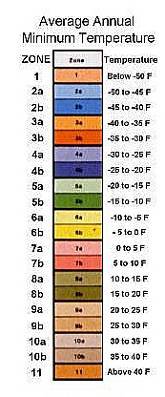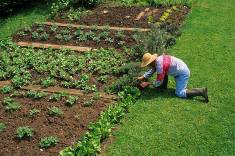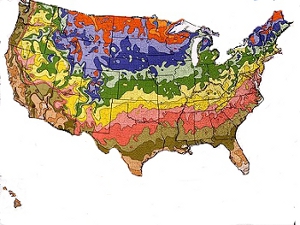|
If you are doing anything besides the in-ground type you will need to obtain your materials and get set up first. For an in-ground garden you will need to finish any soil amendments before planting. Be sure to rake your garden smooth and level before starting your vegetable garden. This is important to avoid problems when watering. If the soil bed slants downhill on one side, then all the water will run off the high side and pool up at the low side. Dips will make puddles that keep the water from moving evenly over the rest of the soil. This is also important to do before setting up a raised bed, for prevention of those same problems. Before You Plant AnythingThe other important thing you must do before starting seeds is to find out what the last frost date is in your region. This and your climate zone will be vital information for your success. With this knowledge you can avoid a disastrous killing frost that demolishes your seedlings if they come up too early for your area. For each vegetable, you will need to read the seed packet to find out the days to germination. Take that number of days, subtract 7-14 days to give you a margin for error, and then plant your seeds the resulting number of days before the last frost date, or later. For example, if you plant green bean seeds, and the packet says that the days to germination are 7-10 days, you would subtract 7 days just in case. So you could plant the seeds 3 days before the last frost date in your area, and should be safe from any danger of frost when they come up. If you want to be really conservative you can use 14 days.

Climate Zone Map, USDA, North America
Climate ZonesAbove is the U.S.D.A. Map of the climate zones in the U.S. If you click on the link below the map, it will take you to the U.S.D.A. site with their interactive map.You can click on your own state and get a better view of the zones that apply in your area. It includes the climate zones for Canada and Mexico as well. This way you can be more accurate since the topography can make a big difference. For example, here in Arizona, the climate zones range from Zone 2-Zone 10. The colder areas are at the highest elevations in the mountains. The low desert area is the hot zone 9 and 10 area. Another thing to consider is that if you are in the floor of a valley, the cold air sinks and will flow toward the valley. That's why there can be large variations in climate zone within any state. To learn more about growing vegetables, here is a great site for you to visit to learn more on how to grow a vegetable garden. You will find a lot of information at Garden- Planting-Tips.com There is a great section on companion planting too. Last Frost DatesFor the last frost date in your area, you can use this link from the National Climatic Data Center to find your state. Then find the city closest to you to get as accurate a date as possible. If the closest city is a very different elevation, then choose one that is closer to your elevation but still near by.
Last Frost Dates In U.S.
from Starting a Vegetable Garden to Vegetable Garden Advice Home Page From Starting a Garden to Seeds for Gardening to Heirloom Vegetable Gardening |







